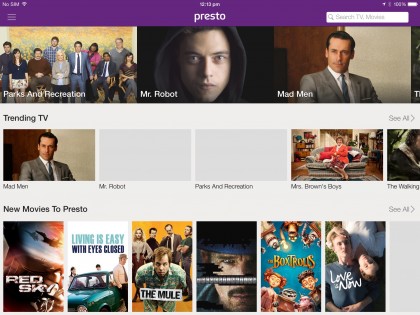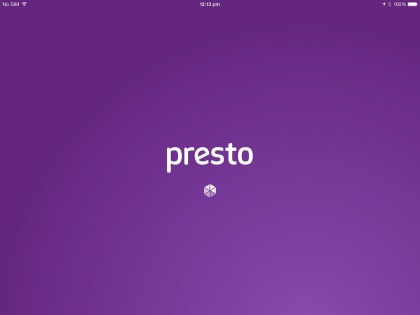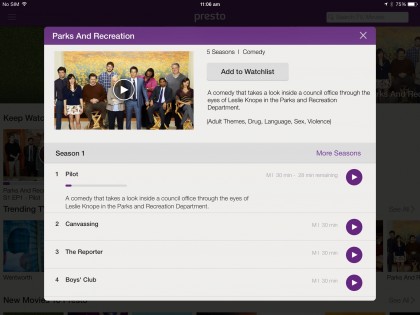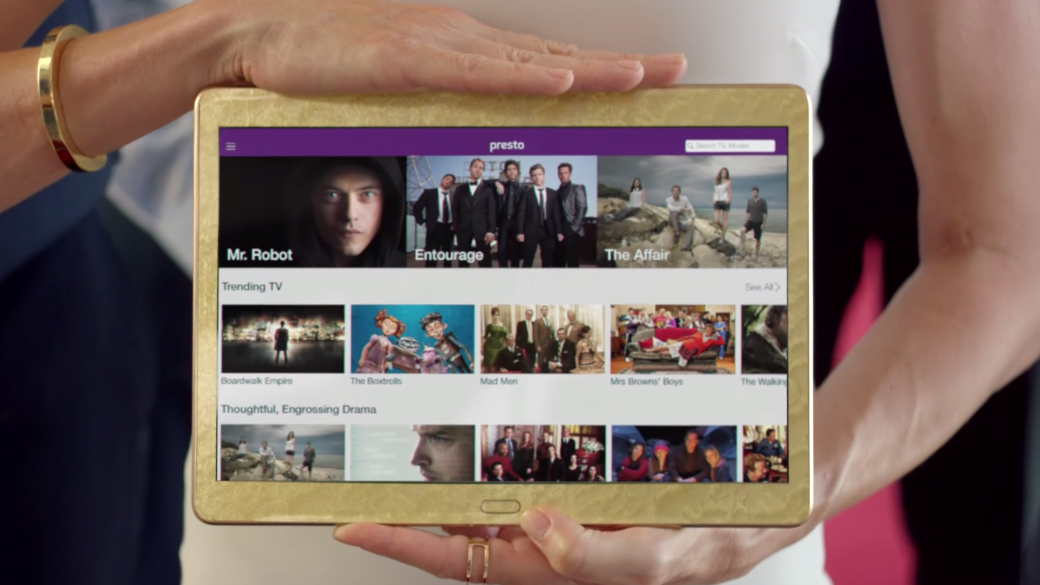Why you can trust TechRadar
Content selection
There's no shortage of movies available to stream through the Presto service. A recent count saw 971 films on offer across a wide variety of genres, and an impressive collection of 335 TV shows as well, although that number does include lots of variants of programs like Sesame Street.
That said, the number of complete TV seasons – as in every episode of every season – is surprisingly limited, given the availability of Foxtel's Box Sets Channel on its Pay TV service.
There are a few HBO shows like The Sopranos and The Wire (but no Game of Thrones anywhere), while May's ACCC approval of the 7-Foxtel partnership means that more local programming like Packed to the Rafters and Always Greener are now available on the service.
Presto recently confirmed it will be streaming each episode of Mr Robot season 2 direct from the US, and also dumped the entirety of The Mindy Project on the platform for those who want to watch the award winning show.

Local Foxtel shows like Wentworth are also present, and pose one of the few exclusive advantages the service has over its competitors at the moment.
Presto has also dipped its toes into the content creation game. It commissioned a Home & Away special which has just launched on the service.
Presto also announced its intentions to launch a 10-part short-form series called "Let's Talk About" tracking a new couple who have accidentally fallen pregnant. Each episode will last three minutes and tackle different stages of the pregnancy.
Sign up for breaking news, reviews, opinion, top tech deals, and more.
The show launched in October, so it's impossible to say if it will work, but the idea of offering short form entertainment to be consumed on the go could be a smart move for the streaming service as a point of difference.
Performance
While Netflix is pushing forward with 4K streams at the same price as the Presto TV and Movies package – Presto customers are only just discovering the joys of high definition.
That's right – almost 12 months after it first launched, Presto finally updated its service at the start of September 2015 to allow high definition streams, having exclusively offered SD streams for the bulk of its existence.
This was especially galling in light of the fact that Stan emerged from StreamCo's womb offering a Full HD service at launch for no extra cost.

Fortunately, the addition of HD quality streams didn't impact pricing for Presto customers, with the Entertainment pack remaining at its premium $15 per month price point.
Certainly, there were always advantages to restricting the service's quality to standard definition. We managed to watch a movie via 3G and LTE on the train with only a single dropout in a known deadzone.
Given each film runs between 1GB and 1.5GB at standard def, so it means you probably don't want to be using this while commuting without a mega download pack tacked on.
Fortunately, you can manually set the video quality in the settings mode of the Presto app on iOS and Android for when you are running off Wi-Fi and when you're on a mobile network, so you can drop the quality down for watching on your commute.
Given the quality of broadband in Australia, streaming at a lower resolution means fewer chance of drop outs, as well as lower data consumption.
And it's not like the quality is overly bad when watching on a computer screen or on an iPad Air. Films like Sin City look perfectly watchable on the tablet when streamed in standard def.
In our earlier review of the service, watching Presto on a 4K display beamed over Chromecast was frankly a disappointing experience. To be honest, even just bumped up to a 55-inch 1080p screen left us rubbing our eyes and longing for mercy.
But now, watching an episode of Mr Robot is perfectly enjoyable.
Big screen action
While Samsung Smart TV owners may be able to enjoy Presto natively, for many subscribers the path to the big screen will involve either a Chromecast or an Apple TV.
The recent launch of the Telstra TV has added a whole new access point, as has the launch of dedicated Android TV support.
Plus, PS4 and PS3 owners can now stream directly from the console, which is probably the biggest expansion the platform has seen.
Setting up the Chromecast function is incredibly easy – like all Chromecasting. Plug in your Chromecast to your TV and set it up by the on screen instructions. Then, when you're watching Presto, you'll see an option to cast the show to the Google dongle. Done.
Frustratingly though, using a Chromecast to beam your movie to the big screen uses up one of the four devices associated with your account.

What's more, the act of beaming content to a Chromecast uses up both of your concurrent streaming devices, so anybody else wanting to watch a different program on a different device won't be able to.
This is particularly frustrating given that Netflix - ultimately the industry benchmark - definitely doesn't work like this. Even if you only have the basic plan, streaming to a Chromecast doesn't count as two concurrent devices, it counts as one.
So ultimately, while easy and useful, the Presto app's Chromecast support must be fairly poorly coded to use up both concurrent streaming devices.
On the Apple side of the fence, Presto has just introduced Airplay support alongside its introduction of HD.
Again, it's a surprise that Airplay took so long to appear, but now that it has arrived it's not without issues.
While it may not suck up one of your precious device slots like the Chromecast does, Presto does however fail to differentiate between video Airplay and audio.
When Presto launched Airplay support, using a pair of Bluetooth headphones while watching an episode of Parks and Recreation the video on the iPad was covered with a superimposed image of a TV.
It made watching the show an impossible task, but was fortunately fixed via an update. But it's not something that we've experienced on any rival services.

Verdict
The Australian streaming market has changed massively in a fairly short space of time.
From next to nothing, we've suddenly got three highly competitive services, each offering a solid collection of exclusive content on a variety of devices.
Despite launching first though, Presto has been playing catch up for the better part of the year.
With its recent update to HD streams and Airplay inclusion, it's definitely a better offering than it was a couple of months ago, but it still lacks the polish found in both Netflix and Stan's offerings.
We liked
The selection is large, in terms of both movies and TV shows. It's not the largest, but Presto does have some good exclusives that make it worthwhile. Foxtel's partnership with HBO is a definite selling point.
The fact that Presto is beginning to create its own content - albeit short-form content at the moment - is definitely a step in the right direction.
Plus, the fact that streams are now available in HD at no extra cost is welcome news.
We disliked
Our list of dislikes has shrunk dramatically with the latest app release, but Presto does still feel a little underdone, especially from the development side of things.
The fact that using a Chromecast uses both of your simultaneous streams at once is a poor implementation of Google's little TV stick.
Not being able to zoom in on a 4:3 video on an iPad seems so half-baked.
While we're starting to see Presto roll out to lots of different platforms, the device management solution is archaic and in dire need of an overhaul.
Final verdict
Presto has come a long way over the past few months, and we're certain it's going to go a lot further before it's done.
But it's still most certainly running third in terms of the quality of its service, despite the recent improvements. Given that it's also the most expensive offering, this makes it harder to recommend.
That's not to say that we don't recommend it. If you're after a comprehensive suite of streaming services, a subscription to Netflix, Stan and Presto will still be cheaper than most Foxtel packages.
But if your cash is limited and you have to limit yourself to one or two SVOD services, Presto is definitely the first to be cut.
With a few improvements to the content lineup and ubiquitous television apps – or the ability to download for offline viewing like Amazon Prime recently introduced – that statement could easily be turned around. And we truly hope that it is.
